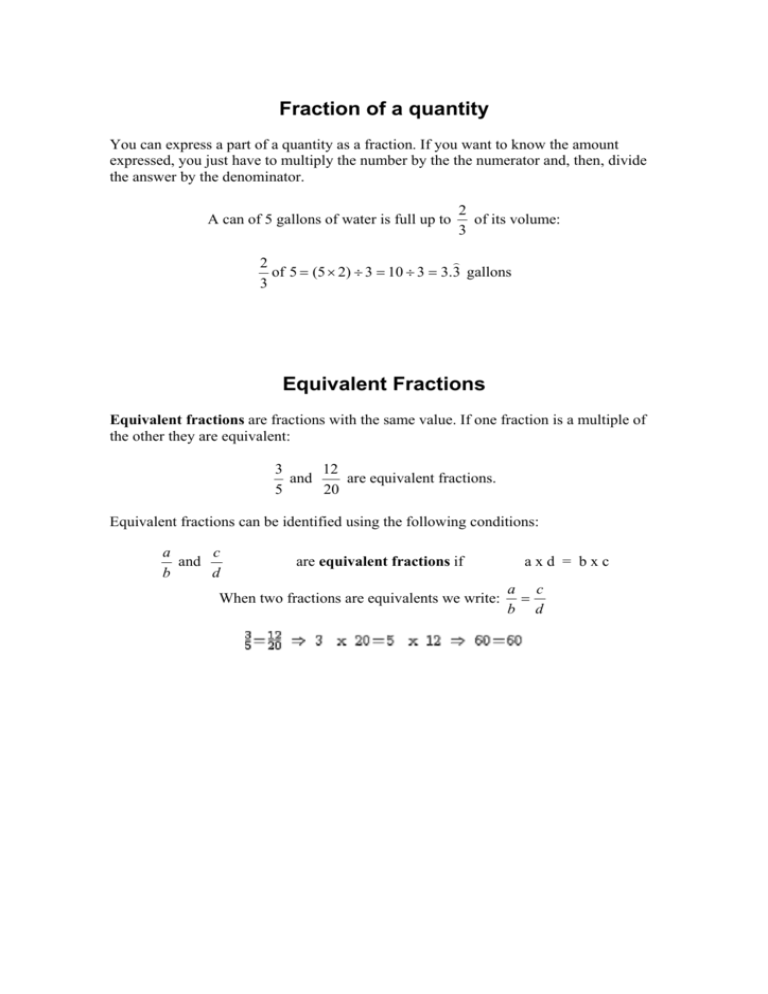Fraction of a quantity Equivalent Fractions
advertisement

Fraction of a quantity You can express a part of a quantity as a fraction. If you want to know the amount expressed, you just have to multiply the number by the the numerator and, then, divide the answer by the denominator. A can of 5 gallons of water is full up to 2 of its volume: 3 ) 2 of 5 = (5 × 2) ÷ 3 = 10 ÷ 3 = 3.3 gallons 3 Equivalent Fractions Equivalent fractions are fractions with the same value. If one fraction is a multiple of the other they are equivalent: 3 12 and are equivalent fractions. 5 20 Equivalent fractions can be identified using the following conditions: a c and b d are equivalent fractions if When two fractions are equivalents we write: axd = bxc a c = b d Adding and subtracting fractions • Adding and subtracting fractions with the same denominator You can add and subtract like fractions easily: simply add or subtract the numerators and write the sum over the common denominator. • Adding and subtracting fractions with different denominator Before you can add or subtract fractions with different denominators, you must first find equivalent fractions with the same denominator, like this: 1. Find the smallest multiple (LCM) of the denominators. 2. Rewrite the fractions as equivalent fractions with the LCM as the denominator. 3. Add the numerators and reduce the answer. Multiply fractions To multiply fractions: 1. Simplify the fractions if they are not in their lowest terms. 2. Multiply the numerators of the fractions to get the new numerator. 3. Multiply the denominators of the fractions to get the new denominator. Simplify the resulting fraction if possible. Divide fractions To divide fractions: You have to make a cross-multiplication: 1. Multiply the first numerator by the second denominator to get the new numerator. 1. Multiply the first denominator by the second numerator to get the new denominator. 3. Simplify the resulting fraction if possible.





